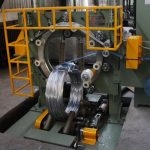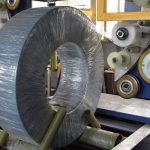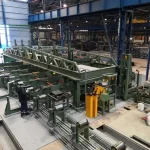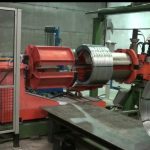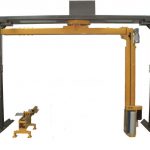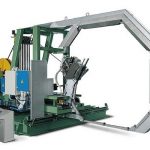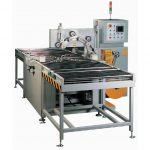5 Key Elements to Creating a Successful Steel Coil Packing Strategy
Steel coils play a vital role in various industries, from construction to automotive manufacturing. Ensuring their safe transport and storage is crucial to maintaining their integrity and quality. A well-planned packing strategy not only preserves the condition of the coils but also optimizes cost and efficiency. Here are five key elements to consider when developing your steel coil packing strategy.
1. Understand Your Packing Needs
The first step in creating a successful packing strategy is understanding the specific requirements of your steel coils. This involves assessing several factors:
- Size and Weight: Different coils may vary significantly in size and weight. Heavier coils need sturdier packing materials to withstand the pressure and prevent tearing or breaking.
- Transportation and Storage Conditions: Consider how the coils will be transported—by road, sea, or air—and the conditions they will face. Each mode of transport may present unique challenges, such as vibration, moisture, or temperature fluctuations.
- Duration of Storage: If coils are stored for extended periods, they may require additional protective measures against environmental factors like humidity and dust.
By thoroughly understanding these needs, you can tailor your packing strategy to provide the best protection.
2. Choose the Right Materials
The selection of packing materials is crucial in safeguarding steel coils. Each material offers unique benefits suited to different protection needs:
- Stretch Film: This material is excellent for providing a tight seal around the coils, keeping them secure during transport. Its elasticity allows it to conform to the shape of the coil, offering additional stability.
- Bubble Film: Known for its cushioning properties, bubble film is ideal for protecting coils from physical impacts. It absorbs shocks and vibrations, which are common during transit.
- PE Film: Polyethylene film is a versatile option that offers protection against dust and moisture. It is often used as an initial wrapping layer to maintain the cleanliness of the coils.
- Paper and Fabric: These materials add an extra layer of protection, preventing scratches and minor surface damage. Fabric, especially, can be reused, making it a cost-effective choice.
- VCI Film: Vapor Corrosion Inhibitor film is crucial in preventing rust and corrosion, especially in humid environments. It releases inhibitors that form a protective layer on the metal surface.
- Cardboard: Often used for structural support, cardboard can be shaped to fit around the coil, providing additional protection against external forces.
Selecting the right combination of these materials ensures comprehensive protection tailored to your specific needs.
3. Consider Environmental Conditions
Environmental conditions play a significant role in the packing strategy. Steel coils are susceptible to damage from various environmental factors, so it’s essential to account for:
- Humidity and Moisture: High humidity levels can lead to rust and corrosion. Using VCI film or moisture-resistant coatings can help mitigate these risks.
- Temperature Fluctuations: Extreme temperatures can affect the integrity of packing materials and the steel itself. Choose materials that can withstand such changes without degrading.
- Exposure to Corrosive Elements: If coils are stored or transported in areas with high salinity or pollutants, they require additional protection. A combination of PE film and VCI film can offer enhanced resistance.
Taking these factors into account ensures that your packing strategy is robust and adaptable to various environmental challenges.
4. Optimize for Transportation
Transportation is a critical phase where most damage occurs. To optimize for transportation:
- Secure the Coils: Use stretch film and fabric straps to prevent shifting during transit. This reduces the risk of damage from movement and vibration.
- Shock Absorption: Implement materials like bubble film or cardboard to absorb impacts. These materials help cushion the coils against bumps and jolts.
- Load Distribution: Properly distribute the weight of the coils to avoid pressure points that could damage the packing materials or the coils themselves.
Optimizing these aspects of transportation ensures that your steel coils remain intact and reach their destination in perfect condition.
5. Evaluate Cost-Effectiveness
While it is crucial to ensure the safety and protection of steel coils, balancing cost and effectiveness is equally important. Consider the following:
- Material Costs: Compare the prices of different materials to find a cost-effective solution that doesn’t compromise on protection. Bulk purchasing can often reduce costs.
- Reusable Materials: Some materials, like certain fabrics or durable films, can be reused. This not only lowers costs but also supports sustainable practices.
- Efficiency in Packing: Streamline your packing process to reduce labor costs and time. Efficient packing methods can lead to faster operations and reduced expenses.
- Waste Reduction: Minimize waste by accurately measuring the materials needed for each coil. This reduces excess usage and lowers environmental impact.
By evaluating these factors, businesses can create a packing strategy that is both economical and effective, ensuring the protection of their coils while optimizing resources.
Creating a successful steel coil packing strategy involves understanding your specific needs, selecting the right materials, considering environmental conditions, optimizing for transportation, and evaluating cost-effectiveness. Each element plays a critical role in ensuring that steel coils remain undamaged and ready for use upon arrival. By continually assessing and refining your strategy, you can maintain efficiency, protect your investment, and support the overall success of your operations.

